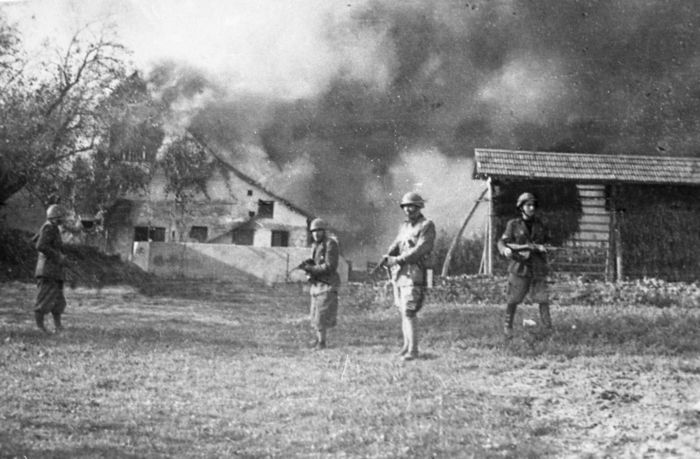TRIESTE - Some events are clearly positioned on the imaginary chronological line of the average Italian in the years around the Second World War: among these, Mussolini's announcement of the racial laws on 18 September 1938 in Trieste, the Italianization process of Slavic community, entry into the war, Nazi torture, sinkholes.
There is a black hole before this last chapter: what happened when the fascists crossed the borders and invaded Yugoslavia.
An exhibition, 'A ferro e fuoco', which opens on April 7 (digitally), pierces the darkness and forces us to look at new horrors and understand the reasons why that interlude, if not hidden, has at least been silenced.
Because it is about the violence, the massacres perpetrated by the Italians.
In reality, historians have talked about it, but the topic has remained confined to academic debates or between experts, associations, (few) witnesses.
The Neapolitan writer Giacomo Scotti, uncomfortable on both sides of the border, who made known the tragedy of Goli otok, the gulag of Tito, wrote books on those years, but in reality Italy has never fully faced the 'topic.
In the exhibition the country (finally) reflects itself, not to look for culprits or stir up spirits but to come to terms with itself with calm lucidity.
"Other countries, such as Germany, have shown more courage in dealing with their dark past. Today, after 80 years, we hope the right time has finally come", summarizes historian Raoul Pupo, curator of the exhibition.
"A blow and fire. The Italian occupation of Yugoslavia 1941-43" (www.occupation italianajugoslavia41-43.it), has the patronage of the Chamber of Deputies and was organized on the occasion of the 80th anniversary of the Italian attack -German to Yugoslavia (yesterday) from the Parri Institute, from the Regional Institute for the History of the Resistance and Contemporary Age in Fvg and from the University of Trieste, with the participation of the Slovenian National Library and Trieste Studies and the contribution of the Region Fvg.
From the 10 sections in which it is divided, the 54 panels, other material and the 81 interviews with scholars, a gruesome panorama emerges.
Mussolini had already decided to attack Yugoslavia in the summer of 1940, but was blocked by Hitler.
The Germans on April 6, 1941, followed by Italians and Hungarians, invaded Yugoslavia and destroyed the kingdom of the Karađór regnoević;
the territory was divided among the winners but the country fell into hell.
"War of liberation against the occupiers; civil war between Croatian ustašcia, Serbian étnicians, Slovenian domobranzi, communist partisans; revolutionary war for the creation of a socialist state, ferocious anti-partisan repressions; extermination of Jews, genocidal attempts against ethnic populations wrong ", remind the organizers.
"Of that whirlwind of violence - indicates Pupo - the Italian troops were not mere spectators, but protagonists. One of the darkest pages of our history. For this reason it is little known and we preferred to forget it".

